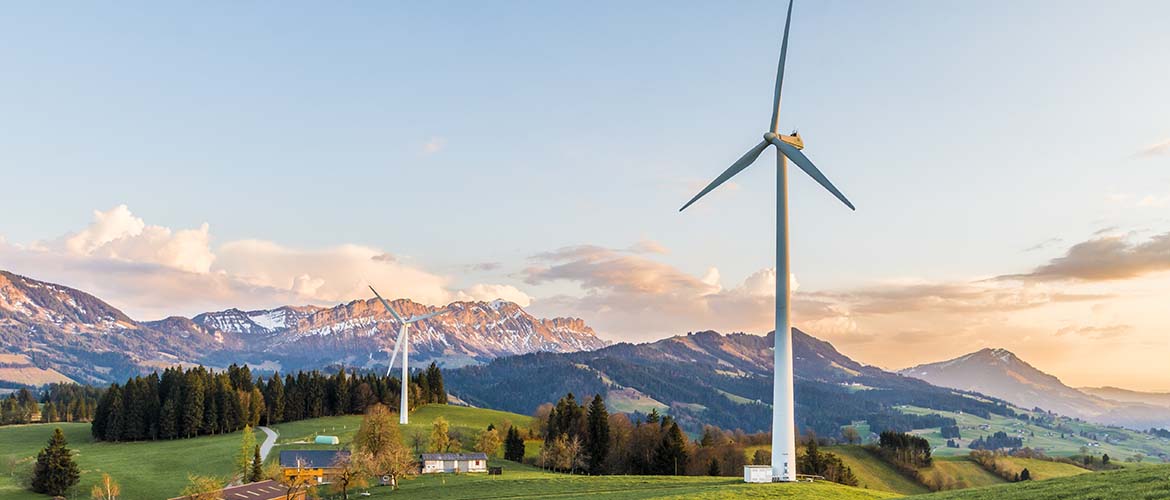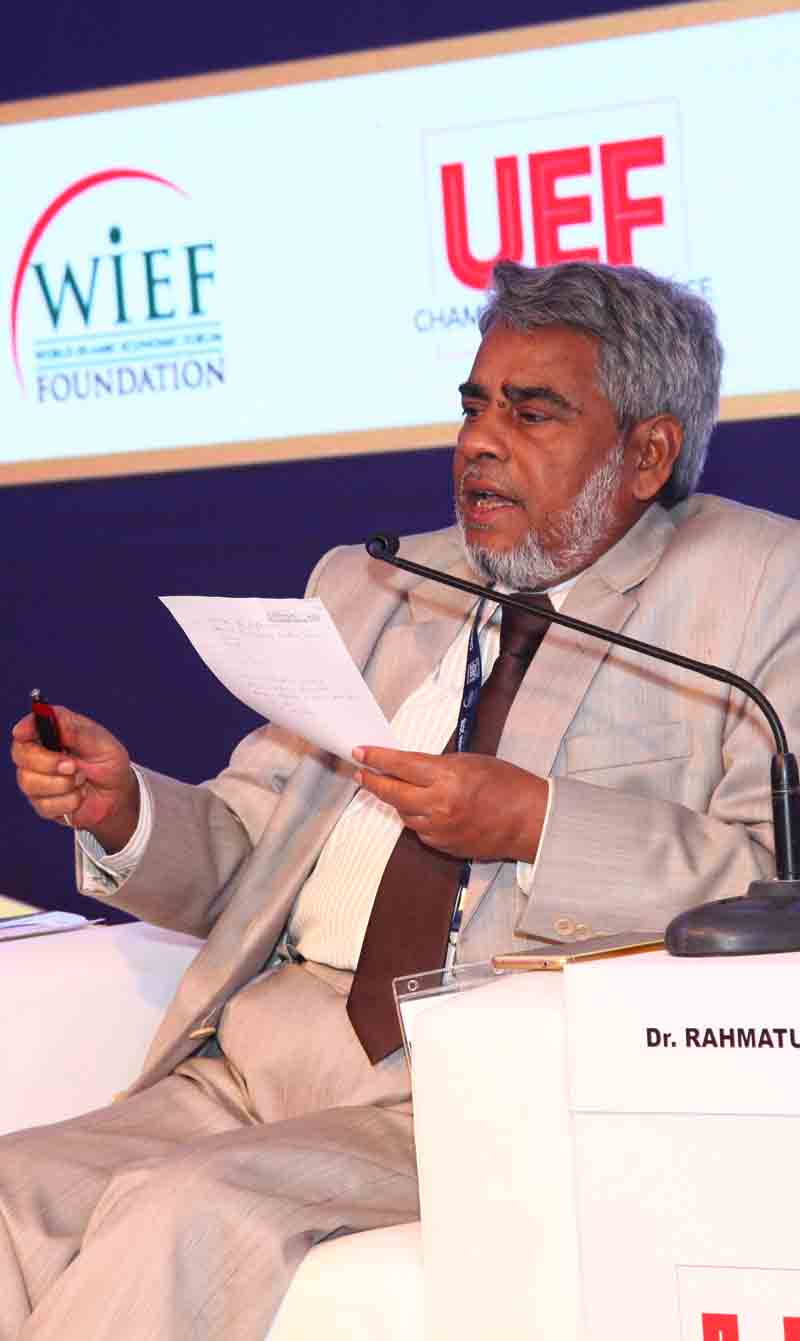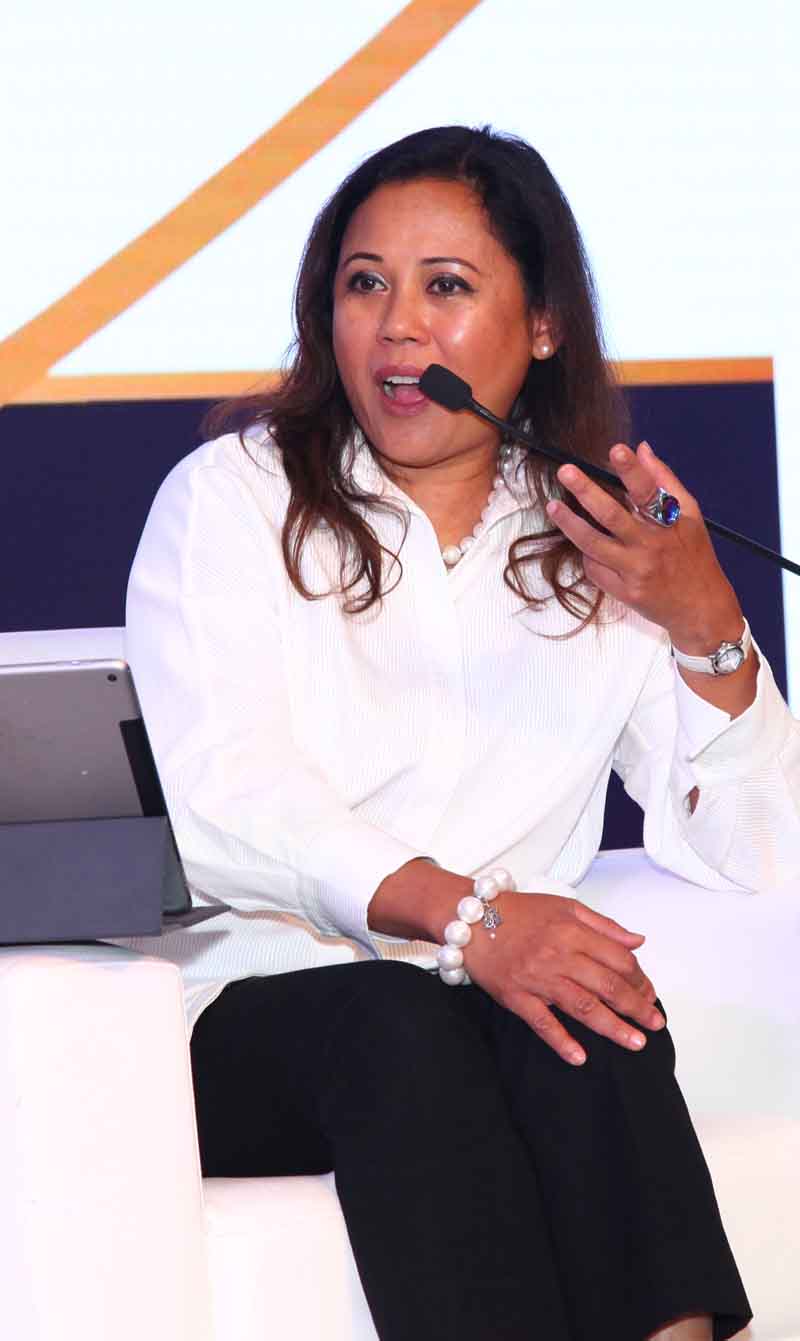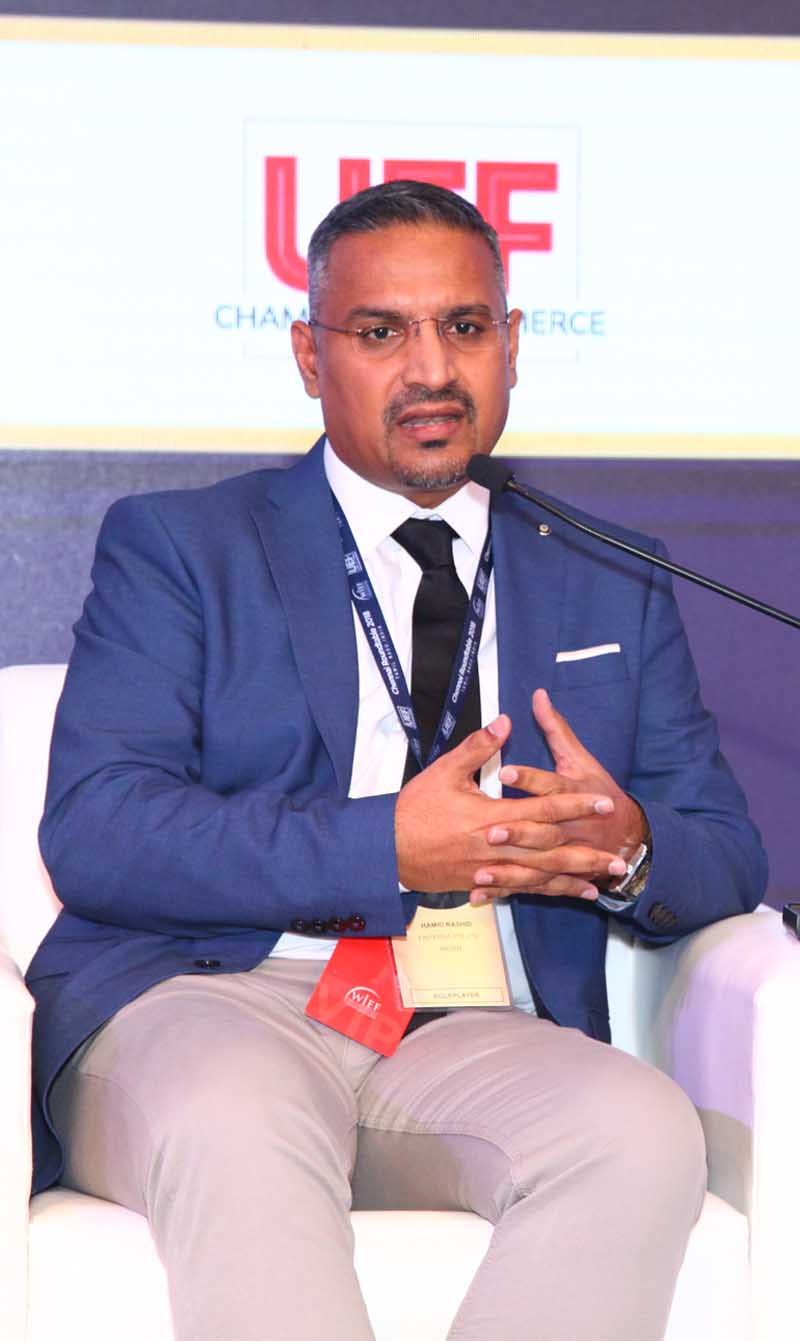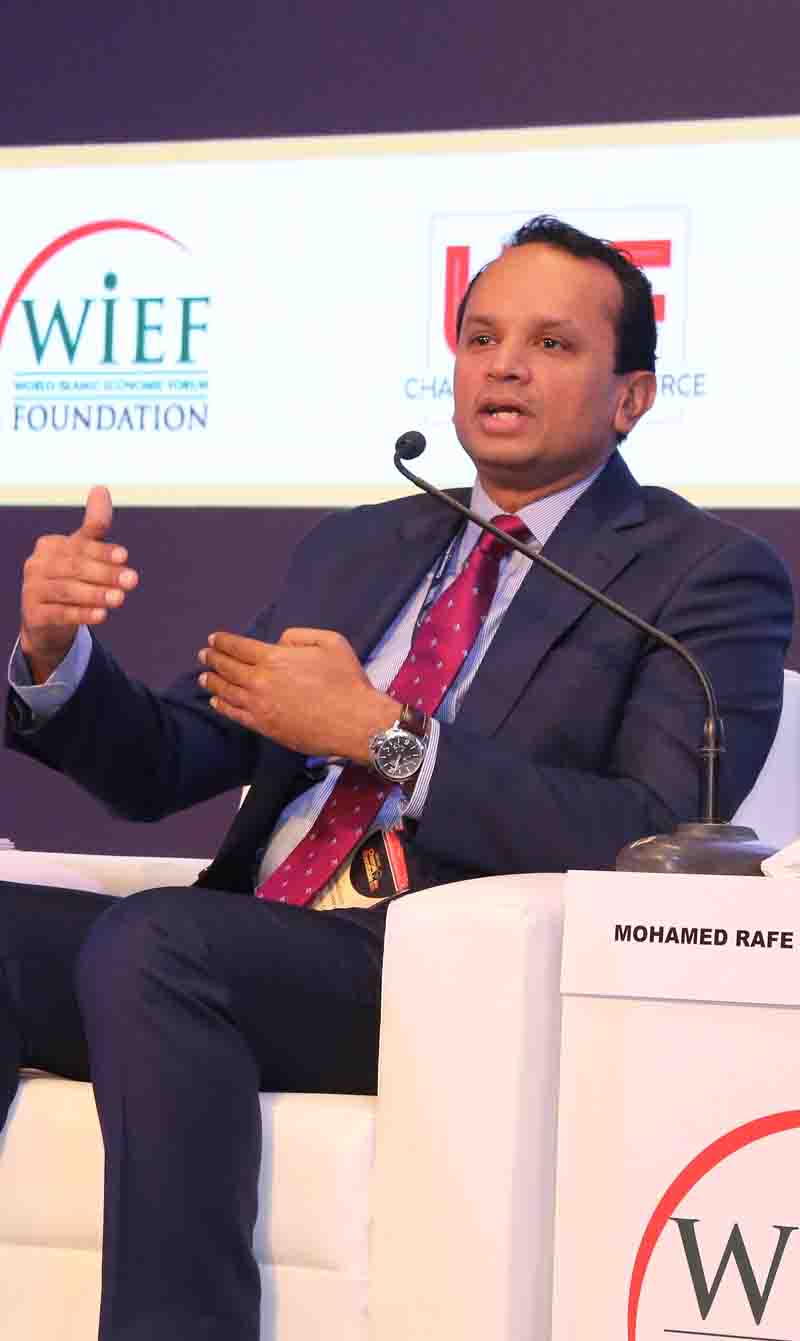Islamic finance for green technologies
A low-carbon economy is emerging in response to the increasingly serious challenges posed by climate change, with a ‘green revolution’ expected to arrive in five to 10 years as the cost of green technologies continue to drop. This will drive up demand for green infrastructure, and in turn, the financing for these long-term projects. Islamic finance, which is about social benefit, stands poised to gain from this trend but needs to innovate faster to go beyond merely replicating conventional financing.
‘Dealing with the challenges of climate change through innovative ways through Islamic finance is the way of the future,’
Climate change and an emerging low-carbon economy
Keynote speaker Lord Ahmad of Wimbledon, Parliamentary Under Secretary of State for Transport and Parliamentary Under Secretary of State for the Home Office, UK, said the impact of climate change can be potentially catastrophic, pointing out that the rising sea levels in countries like Bangladesh and the Maldives. ‘Changing climate patterns will have a severe impact on agriculture and our ability to feed ourselves, and we may already have been seeing the effects of this,’ he said.
But on the positive side, he said a low-carbon economy is rapidly emerging in response to these challenges and was now worth over GBP122 billion globally. He said the UK has been building low-carbon requirements into its plans for renewing its cities and infrastructure, and has set up an infrastructure commission with an immediate priority to look into energy consumption. Lord Ahmad said this presented opportunities for Islamic finance to step up to support efforts to combat climate change while making reasonable returns on investments.
The UK, he said, was uniquely positioned to bring together the disciplines of green finance and Islamic finance. In terms of Islamic finance, the UK has issued a Government sukuk and launched an export credit guarantee facility for projects funded by Islamic finance as well as a dedicated takaful facility at Lloyd’s of London. The UK is also leading the way in green finance, having established a green investment bank, and green bonds are increasingly being listed in London—including the world’s first renminbi-denominated green bond issued by the Agricultural Bank of China. ‘Dealing with the challenges of climate change through innovative ways through Islamic finance is the way of the future,’ he said
Capital markets as a solution
Sean Kidney, Chief Executive Officer and co-founder, Climate Bonds Initiatives, UK, said Islamic finance can play a key role in changing how capital is managed globally because it has social purpose as its central tenet.
He pointed out that there was a great deal of capital out there looking for yield, including investments from pension, insurance and sovereign wealth funds. At the United Nations Climate Summit in September 2015, investors representing USD43 trillion under management said they stood ready to invest in immediate action on climate change, while the value of the green bond market stood at USD50 billion for 2015. ‘In Europe and the US, we have investors representing USD21 trillion under management [and they claim] to be socially responsible investors,’ Kidney said.
He also noted that a coalition for green bonds and capital market instruments would be launched at the forthcoming climate change conference in Paris, and the coalition would involve development banks, institutional investors and governments.
To capitalise on this, he said three initiatives could be taken: the first was to ‘show how’—the use of Islamic financial instruments in green investments had to be demonstrated as has been done in the green bond market. Secondly, targeted support such as credit enhancement, tax incentives and foreign exchange hedging tools could be co-sponsored by wealthy countries to ensure that the first instruments to come on the market would be received well. And thirdly, there must be a push from governments to do more in terms of green infrastructure planning.
Kidney stressed that while there was no shortage of investors, there was a lack of green financial instruments they could invest in.
Changing the game for Islamic finance
‘Products must be shariah-based rather than shariah-compliant,’
Datuk Dr Nik Ramlah Mahmood, Deputy Chief Executive, Securities Commission Malaysia, said as there are strong synergies between socially responsible financing and Islamic finance, green financing can be the key to take Islamic finance to the next level.
However, she said while Islamic finance has made tremendous headway in the past two or three decades, many of its innovations have been adaptations of conventional products with changes merely to make them shariah-compliant by removing the unacceptable parts. To progress, Islamic financial products must embrace the true objectives (that is, the maqasid) of the shariah; they must also be inclusive and incorporate sustainable environmental and social values. ‘Products must be shariah-based rather than shariah-compliant,’ Dr Nik Ramlah said, adding that Islamic finance can support sustainable growth because it is directly linked to the real economy.
Making green financing a central component of Islamic products will also help them gain greater acceptance from a larger segment of the investment community. Further, she said, green financing typically involves longer term infrastructure financing which banks are less eager to undertake because of stricter capital requirements. Thus, financing for these projects can be obtained, not just from conventional SRI investors, but also those seeking investments in compliance with the syariah.
There are tremendous opportunities for Islamic finance, she said, but it has to move from negative screening to positive screening; rather than looking at just what is allowed, it should also look at what is good for society.
Tariq Al-Rifai, an author, writer and advisor on Islamic finance based in Kuwait, noted that with the rapid innovation and research in green technology, the green revolution will probably catch up in five to 10 years. He also spoke about different governmental measures to promote green financing, such as the Malaysian green technology financing scheme by the Malaysian Green Technology Corporation. He observed that the Islamic Development Bank had become a major player in clean technology investment—with commitments of more than USD1 billion—while the UAE Government planned to launch a green sukuk and companies in the UK, Canada and Hong Kong have already launched shariah-compliant investments. However, Al-Rifai said while these initiatives were a step in the right direction, they were still insufficient.
Irfan Siddiqui, President and Chief Executive Officer of Meezan Bank in Pakistan, said rapid innovation in green technology has already brought about positive change and the green revolution would likely speed up in the next five to 10 years as costs of green buildings, wind power and solar power decline.
Speeding up Islamic green initiatives
Moderator Dr Lum asked panellists why Islamic financial institutions have been slow to involve themselves in green investments when from a religious and philosophical perspective, it should be the leader.
Siddiqui noted that in Pakistan, green projects have really started only in the past three years—banks were not averse but lacked opportunities. However, he anticipates that more of such projects will be unveiled as pricing improves.
Al-Rifai responded that while many entities such as the Malaysian and UAE governments, Khazanah Nasional Bhd and Islamic Development Bank have been promoting green Islamic financing, the private sector and Islamic banks have not. He called on governments to support the initiative, noting that when Kuwait Finance House launched its sustainability initiative a few years ago, it was the only Islamic bank in the world to have such a mandate.
Dr Nik Ramlah reiterated that the focus should not be on Islamic investors alone— Islamic financial products should be designed for all investors and be cost-effective. This, she said, has been the key to Malaysia’s successful experience in the sector: today, 26 per cent of the country’s banking assets are Islamic but the majority of these belong to non-Muslims. She said that the challenge was to create a convergence between socially responsible investment and Islamic finance so that the latter might tap a wider market: ‘Initiatives of this nature have to come from the Government before the private sector follows,’ Dr Nik Ramlah observed.
Q&A
Q1: Is Islamic finance really practising the Islamic way?
Siddiqui: Your first effort should be to go away from haram or unacceptable, and then train to do something that is acceptable or halal. We should take a broader perspective, we should not feel that because it’s replicating or mimicking conventional finance that it is wrong. In countries like Bangladesh and Pakistan, demand is more driven by depositors. Islamic banks would not find a lot of avenues to go into private equity, private mudarabah or leasing transactions; the depositors are not ready to take risks. We should obviously aspire to go to the next level but not feel apologetic.
Q2: Can Islamic finance be as competitive as the conventional source of financing, whether it’s equity or debt?
Siddiqui: There was a time when Islamic finance was more expensive. We always used to say there was a word coined by somebody: ‘COBM’ the cost of being Muslim, that is you pay a higher price to get Islamic finance. But now things have completely reversed. In Pakistan, Islamic finance is available at a fraction cheaper than conventional finance because the availability of assets (in which Islamic banks can invest) are more limited.
___________________
This report is based on the 11th WIEF session.
